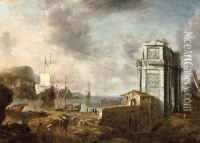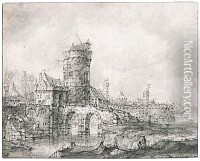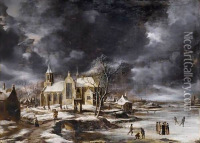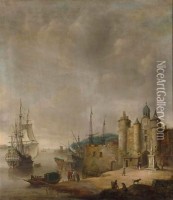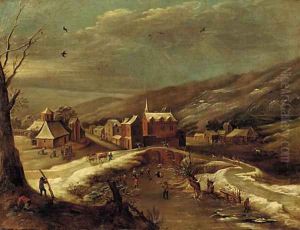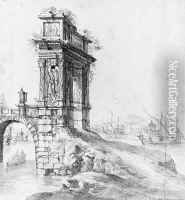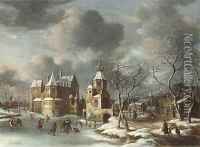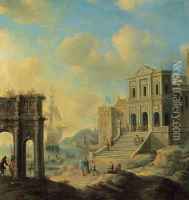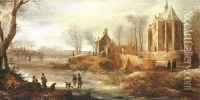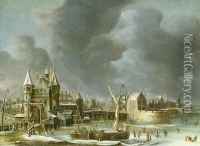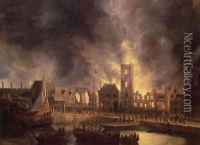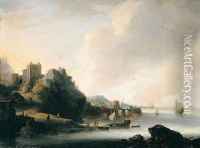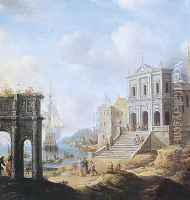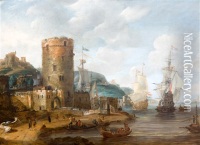Jan Abrahamsz. Beerstraten Paintings
Jan Abrahamsz. Beerstraten was a Dutch Golden Age painter known primarily for his maritime and landscape paintings. Born in Amsterdam in 1622, Beerstraten was part of a period in Dutch art that is celebrated for its detailed realism, depth of color, and innovative compositional techniques. Though not as widely recognized as some of his contemporaries, Beerstraten's work provides a fascinating glimpse into the seafaring culture of the 17th-century Netherlands and its impact on the Dutch identity.
Beerstraten's oeuvre includes a range of subjects, from tumultuous sea battles and serene harbor scenes to winter landscapes and cityscapes, often featuring Amsterdam. His ability to capture the texture of light on water and the complex interplay of sky and sea has been particularly lauded. Beerstraten was skilled in depicting the dramatic and ever-changing Dutch skies, a hallmark of his maritime paintings.
Despite the quality of his work, detailed records of Beerstraten's life are scant. It is known that he was a member of the Amsterdam Guild of Saint Luke, an organization for painters and other artists, but much about his personal life and training remains a mystery. There is some evidence to suggest that he might have been a student or follower of the famous Dutch marine painter Simon de Vlieger, who was known for his innovative approach to painting seascapes.
Beerstraten's legacy is somewhat overshadowed by the more famous figures of the Dutch Golden Age, such as Rembrandt van Rijn, Johannes Vermeer, and Frans Hals, yet his work is a vital part of the era's artistic fabric. His paintings are held in several prestigious collections and museums around the world, where they continue to be studied and admired for their contribution to the maritime genre and Dutch Golden Age painting.
Jan Abrahamsz. Beerstraten passed away in Amsterdam in 1666. Despite the relative obscurity he has faced compared to his peers, recent scholarship and exhibitions have begun to shed more light on his contributions to art history, ensuring his place in the annals of Dutch painting is not forgotten.
